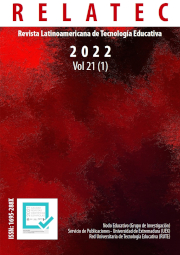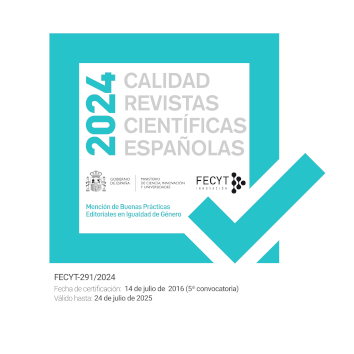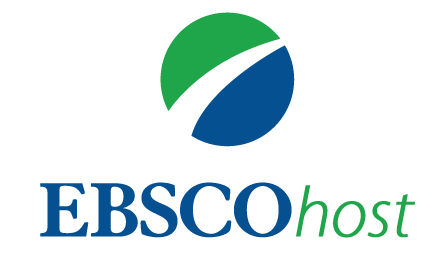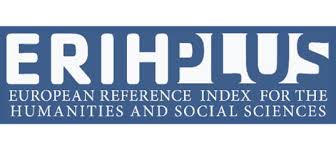Artificial Intelligence in Education: Big Data, Black Boxes, and Technological Solutionism
DOI:
https://doi.org/10.17398/1695-288X.21.1.129Keywords:
Technology-Enhanced Learning, Artificial Intelligence, Learning Analytics, Persuasive Technologies, Educational ContextsAbstract
The use of digital technology is constantly permeating and transforming all social systems, and education is not an exception. In the last decade, the development of Artificial Intelligence has given a new push to the hope of providing educational systems with ‘effective’ and more personalized solutions for teaching and learning. Educators, educational researchers, and policymakers, in general, lack the knowledge and expertise to understand the underlying logic of these new systems, and there is insufficient research based evidence to fully understand the consequences for learners’ development of both the extensive use of screens and the increasing reliance on algorithms in educational settings. This article, geared towards educators, academics in the field of Education, and policymakers, first introduces the concepts of ‘Big Data’, Artificial Intelligence, Machine Learning algorithms and how they are presented and deployed as ‘black boxes’, and the possible impact on education these new software solutions can have. Then, it focuses on the underlying educational discourses that historically have seen information and communication technologies as a panacea for solving educational problems, pointing out the need to analyse not only their advantages, but also their possible negative effects. It finishes with a short exploration of possible future scenarios and conclusions.
Downloads
References
Alter, A. (2017). Irresistible: The Rise of Addictive Technology and the Business of Keeping. Penguin Press.
Banks, J. A., Au, K. H., Ball, A.F., Bell, P., Gordon, E. W., Gutiérrez, K. D., Heath, S. B., Lee, C. D., Lee, Y., Mahiri, J.,
Nasir, N. S., Valdés, G., Zhou, M. (2007). Learning in and out of school in diverse environments. Life-long, Life-wide, Life-deep. The LIFE Center for Multicultural Education, University of Washington. http://lifeslc.org/docs/Banks_etal-LIFE-Diversity-Report.pdf
Bernstein, B. (1970). Education cannot compensate for society. New society, 26, 344-345.
Bogost, I. (2015, January 15). The Cathedral of Computation. The Atlantic. http://www.theatlantic.com/technology/archive/2015/01/the-cathedral-ofcomputation/384300/
Buchanan, R., & McPherson, A. (2019, July 8). Education shaped by big data and Silicon Valley. Is this what we want for Australia? EduResearch Matters, https://www.aare.edu.au/blog/?p=4182
Calvet Liñán, L., & Juan Pérez, Á. A. (2015). Educational Data Mining and Learning Analytics: differences, similarities, and time evolution. RUSC. Universities and Knowledge Society Journal, 12(3), 98-112. http://dx.doi.org/10.7238/rusc.v12i3.2515
Castells, M. (1996). The Rise of the Network Society (Information Age), vol. 1. 2nd ed. Blackwell Publishers.
Chakroun, B., Miao, F., Mendes, V., Domiter, A., Fan, H., Kharkova, I., Holmes, W., Orr, D., Jermol, M., Issroff, K., Park, J., Holmes, K., Crompton, H., Portales, P., Orlic, D., & Rodriguez, S. (2019). Artificial Intelligence for Sustainable Development: Synthesis Report, Mobile Learning Week 2019. UNESCO
Cohen, D. K. (1988). Educational Technology and School Organization. In R. S. Nickerson & P. P. Zodhiates (Eds.), Technology in Education: Looking Toward 2020 (pp. 231264). Hillsdale, NJ: Lawrence Erlbaum Associates, Pu.
Cuban, L. (1986). Teachers and Machines: The Classroom Use of Technology Since 1920. Teachers College.
Cuban, L. (1993). How teachers taught: constancy and change in American classrooms, 1890-1990. Teachers College Press.
Delors, J. (1998). Learning: The treasure within. Unesco.
Desmurget, M. (2020). La fábrica de cretinos digitales. Península.
Dick, S. (2019). Artificial Intelligence. Harvard Data Science Review, 1(1). https://doi.org/10.1162/99608f92.92fe150c
Dickson, B. (2021, January 28). Demystifying deep learning. Techtalks. https://bdtechtalks.com/2021/01/28/deep-learning-explainer/
European Commission (2021). Regulatory framework proposal on Artificial Intelligence. https://digital-strategy.ec.europa.eu/en/policies/regulatory-framework-ai
Finn, E. (2017). What Algorithms Want. Imagination in the Age of Computing. The MIT Press. https://doi.org/10.7551/mitpress/9780262035927.001.0001
Fogg, B. J. (2003). Persuasive Technology: Using Computers to Change what We Think and Do. Morgan Kaufmann Publishers.
Fogg, B. J. (2009). A Behavior Model for Persuasive Design. Persuasive’09, April 26-29.
Claremont, CA. https://doi.org/10.1145/1541948.1541999
Gates, B. (1996). The road ahead. Viking.
Goldstein, H. (2018). Measurement and Evaluation Issues with PISA. In L. Volante (Ed.), The PISA Effect on Global Educational Governance (pp. 49-58). Routledge.
Google (2018). How Google Fights Piracy. https://www.blog.google/documents/25/GO806_Google_FightsPiracy_eReader_fi nal.pdf
Hartong, S., & Förschler, A. (2019). Opening the black box of data-based school monitoring: Data infrastructures, flows and practices in state education agencies. Big Data & Society. https://doi.org/10.1177/2053951719853311
Hilbert, M., & López, P. (2011). The World’s Technological Capacity to Store, Communicate, and Compute Information. Science, 332(6025), 60-65. https://doi.org/10.1126/science.1200970
Isaak, J., & Hanna, M. J. (2018). User Data Privacy: Facebook, Cambridge Analytica, and Privacy Protection. Computer, 51(8), 56-59. https://doi.org/10.1109/MC.2018.3191268.
Knox, J., Williamson, B., & Bayne, S. (2020). Machine behaviourism: Future visions of ‘learnification’ and ‘datafication’ across humans and digital technologies. Learning, Media and Technology, 45(1), 31-45. https://doi.org/10.1080/17439884.2019.1623251
Lahitou, J. (2018, August 18). Silicon Valley Parents Choose Low & No Tech Schools. What About Your Kid’s School? The Good Man Project. https://goodmenproject.com/uncategorized/silicon-valley-parents-choose-low-notech-schools-thats-probably-not-the-tech-policy-at-your-kids-school/
Lennon, T. (2016, August 11). Babylon’s ancient clay tablets made more census than today’s computers. The Daily Telegraph. https://www.dailytelegraph.com.au/news/babylons-ancient-clay-tablets-mademore-census-than-todays-computers/newsstory/3f76510db70c6bfd1185192a2e90badc
Lupton, D., & Williamson, B. (2017). The datafied child: The dataveillance of children and implications for their rights. New Media & Society, 19(5), 780-794. https://doi.org/10.1177/1461444816686328
MacDonald, B. (1993). Micromundos y mundos reales. Una agenda para la evaluación. Comunicación y Pedagogía-Infodidac. October, 31-41.
McClintock, R. O. (1993). El alcance de las posibilidades pedagógicas. In R. O. McClintock, G. Vázquez, M. J. Streibel (Coord.), Comunicación, tecnología y diseños de instrucción: la construcción del conocimiento escolar y el uso de los ordenadores (pp. 104-125). CIDE-MEC.
Morozov, E. (2013). To save everything, click here: The folly of technological solutionism. Public Affairs.
Muhammad, S.S., Dey, B.L., & Weerakkody, V. (2018). Analysis of Factors that Influence
Customers’ Willingness to Leave Big Data Digital Footprints on Social Media: A Systematic Review of Literature. Information Systems Frontiers, 20(3), 559-576. https://doi.org/10.1007/s10796-017-9802-y
Negroponte, N. (1995). Being Digital. Alfred A. Knopf.
Noble, D. D. (1991). The Classroom Arsenal: Military Research, Information Technology, and Public Education. The Falmer Press.
O’Neil, C. (2016). Weapons of Math Destruction: How Big Data Increases Inequality and Threatens Democracy. Crown Publishing Group, USA.
OECD-CERI (2006). Personalising Education. OECD. http://dx.doi.org/10.1787/9789264036604-en
OECD (2015). Students, Computers and Learning: Making the Connection, PISA. OECD. http://dx.doi.org/10.1787/9789264239555-en
OECD (2019). OECD Principles on Artificial Intelligence. https://www.oecd.org/goingdigital/ai/principles/
Papert, S. (1993). The Children's machine. Basic Books.
Peirano, M. (2019). El enemigo conoce el sistema. Manipulación de ideas, personas, influencias después de la economía de la atención. Debate.
Perelman, L. J. (1992). Schools Out. Hyperlearning, the New Technology, and the end of Education. William Morrow and Company, Inc.
Phillips, D. C. (2014). Research in the Hard Sciences, and in Very Hard “Softer” Domains. Educational Researcher, 43(1), 9-11. https://doi.org/10.3102/0013189X13520293
Pigott, T. D., Tocci, C., Ryan, A. M., & Galliher, A. (2021). Quality of Research Evidence in Education: How Do We Know? Review of Research in Education, 45(1), vii-xii. https://doi.org/10.3102/0091732X211001824
Pinar Saygin, A., Cicekli, I. & Akman, V. (2000). Turing Test: 50 Years Later. Minds and Machines 10, 463-518. https://doi.org/10.1023/A:1011288000451
Popkewitz, T. (2018, September 6). The Paradox of Research: The Good Intentions of Inclusion that Excludes and Abjects. ECER 2018. Bolzano, Italy. https://cutt.ly/pk6dwqQ
Ray S., & Saeed M. (2018). Applications of Educational Data Mining and Learning Analytics Tools in Handling Big Data in Higher Education. In M. Alani, H. Tawfik., M. Saeed & O. Anya (eds), Applications of Big Data Analytics. Springer, Cham. https://doi.org/10.1007/978-3-319-76472-6_7
Rittel, H. W. J., & Webber, M. M. (1984). Planning Problems are Wicked Problems. Developments. In N. Gross (ed.),
Design Methodology (pp. 135-144). John Wiley and Sons.
Saettler, P. (1990). The Evolution of American Educational Technology. Libraries Unlimited, Inc.
Sancho-Gil, J. M. (1995). Looking for the 'Right' Answers or Raising the 'Right' Questions? A Dialogical Approach to Automating Instructional Design. In R. D. Tennyson & A. E. Barron (Ed.), Automating Instructional Design: Computer-Based Development and Delivery Tools (pp. 79-99). Springer-Verlag. NATO ASI Series F: Computer and Systems Sciences, Vol. 140.
Sancho-Gil, J. M. (1998). Enfoques y funciones de las nuevas tecnologías para la información y la educación: lo que es no es lo que parece. In J. de Pablos & J. Jiménez (Eds.), Nuevas Tecnologías, Comunicación Audiovisual y Educación (pp. 71-102). Cedecs.
Sancho-Gil, J. M. (2020). Digital technology as a trigger for learning promises and realities. Digital Education Review, 37, 195-207. https://doi.org/10.1344/der.2020.37.191-203
Sancho-Gil, J. M., Rivera-Vargas, P. & Miño-Puigcercós, R (2020). Moving beyond the predictable failure of Ed-Techinitiatives. Learning, Media and Technology, 45(1), 61-75. https://doi.org/10.1080/17439884.2019.1666873
Sancho-Gil, J. M. (2021, 23 febrero). No abandonamos, vosotros nos abandonasteis. El Diario de la Educación. https://cutt.ly/ZIMWpME
Greg Thompson (2017) Computer adaptive testing, big data and algorithmic approaches to education, British Journal of Sociology of Education, 38:6, 827-840, DOI: 10.1080/01425692.2016.1158640
Trendacosta, K. (2020, December 10). Unfiltered: How YouTube’s Content ID Discourages Fair Use and Dictates What We See Online. Electronic Frontier Foundation.
Turkle, S. (1995). Life on the Screen: Identity in the Age of the Internet. Shuster and Shuster.
Warzel, Ch. (2019, July 2). Welcome to the K-12 Surveillance State. Is tech really the solution to student safety? New York Times. https://www.nytimes.com/2019/07/02/opinion/surveillance-state-schools.html
Weizenbaum, J. (1966). ELIZA--A Computer Program for the Study of Natural Language Communication Between Man and Machine. Communications of the ACM, 9(1), 36-45. https://doi.org/10.1145/365153.365168
Weller, C. (2018, February 18). Silicon Valley parents are raising their kids tech-free — and it should be a red flag. Buisiness Insider. https://www.businessinsider.com/siliconvalley-parents-raising-their-kids-tech-free-red-flag-2018-2
Williamson, B. (2017). Big Data in Education: The Digital Future of Learning, Policy and Practice. SAGE Publications. https://doi.org/10.4135/9781529714920
Williams, J. (2018). Stand out of our Light: Freedom and Resistance in the Attention Economy. Cambridge University Press. https://doi.org/10.1017/9781108453004
Zuboff, S. (2019). The age of surveillance capitalism: The fight for a human future at the new frontier of power: Barack Obama's books of 2019. Profile books.
Downloads
Published
Issue
Section
License
Authors who publish in this journal accept the following conditions:
1. The Author retains copyright in the article. Upon acceptance of the article, the author shall grant to the Publisher the right of first publication of the article. with the dcoument registered with the Creative Commons Attribution-NonCommercial-NoDerivative 4.0 International (CC BY-NC-ND) license, which allows to third parties to use what is published whenever they mention the authorship of the work and the first publication in this journal.
2. Authors can make other independent and additional contractual agreements for the non-exclusive distribution of the article published in this journal (eg, include it in an institutional repository or publish it in a book) provided they clearly indicate that the work was published for the first time in this journal.
3. Authors are allowed and recommended to publish their work on the Internet (for example on institutional or personal pages) before and during the review and publication process, as it can lead to productive exchanges and a greater and faster diffusion of published work (see The Effect of Open Access).









